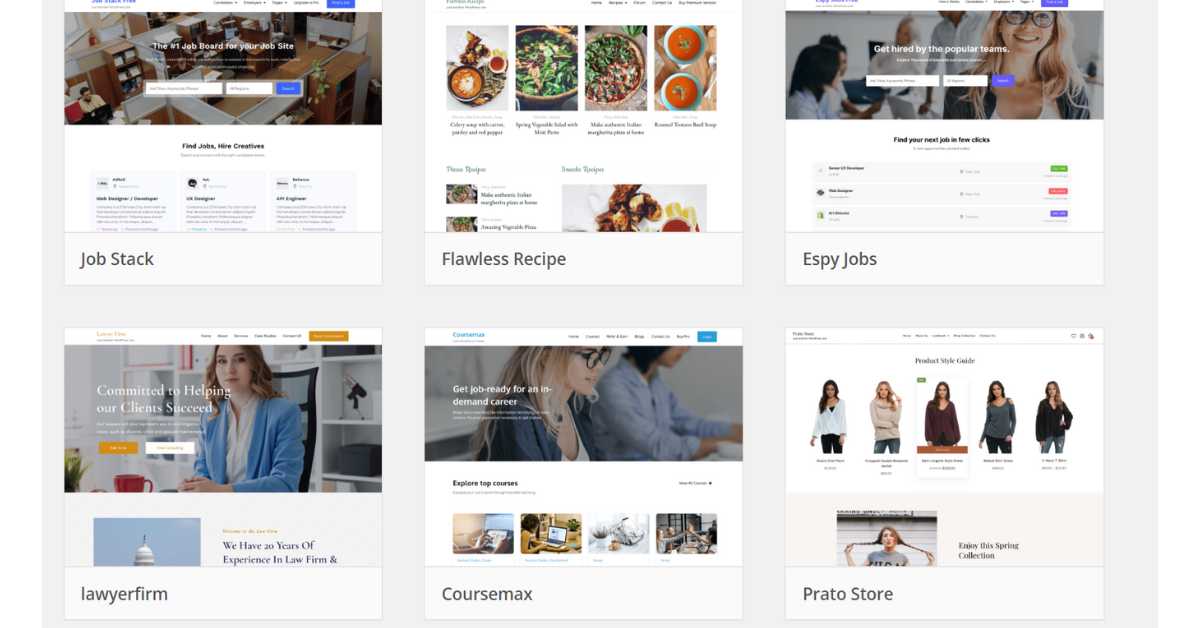A beautiful website is crucial for attracting visitors and establishing your brand identity. But functionality is king. WordPress themes, while offering a vast array of design options, can sometimes clash with plugins or your chosen page builder. This can lead to a frustrating experience for you and your visitors – broken layouts, missing features, and even security vulnerabilities that could compromise your website’s safety.
In this guide, we’ll break down common theme compatibility issues in WordPress and provide easy-to-follow solutions to keep your website running smoothly.
The Consequences of Theme Incompatibility
Beyond the immediate annoyance of a malfunctioning website, theme incompatibility can have more severe consequences:
- Security Vulnerabilities: Outdated themes or plugins with unresolved compatibility issues can create security gaps that hackers can exploit.
- SEO Impact: A website riddled with layout inconsistencies or slow loading times due to theme conflicts can be penalized by search engines, affecting your website’s ranking and visibility.
- Frustrated Visitors: A website that doesn’t display correctly across devices or has broken features will leave a negative impression on your visitors, potentially driving them away.
Common WordPress Theme Compatibility Issues and How to Fix Them
Plugin Conflicts:
Problem: One of the most prevalent compatibility issues arises when themes conflict with plugins. This can result in broken layouts, dysfunctional features, or site crashes. Plugins might inject code that interferes with the theme’s functionality or vice versa.
Solution:
Keep Everything Updated: Ensure both your theme and plugins are updated regularly. Compatibility issues often arise due to outdated code. Theme and plugin developers constantly release updates that address bugs and improve compatibility.
Test Before Deploying: Wait to activate a new plugin directly on your live website. Create a staging environment—a replica of your website—to test new plugins and identify potential conflicts before they affect your visitors. Plugins are available to help you quickly create a staging environment.
Seek Support: If you encounter a conflict you can’t resolve, contact the plugin developer or theme support forums for specific troubleshooting assistance.
CSS and JavaScript Conflicts:
Problem: Themes often come bundled with their own CSS and JavaScript files, which can clash with those of plugins or other theme parts, leading to styling inconsistencies or functionality issues. For instance, a plugin might add a button with a specific style, but the theme’s stylesheet might override it, resulting in a visually unappealing or non-functional button.
Solution:
Identify Conflicting Files: Use browser developer tools like Chrome DevTools or Firefox DevTools to pinpoint the conflicting CSS or JavaScript files. These tools allow you to inspect the code behind your website’s visual elements and identify where styles or scripts are being overridden.
Adjust Loading Order or Use Custom CSS: You can adjust the loading order of scripts and stylesheets to ensure the correct styles take precedence. Alternatively, custom CSS can override conflicting styles and achieve the desired look. This approach has a learning curve, so consider seeking help from a developer if you’re uncomfortable with the code.
Utilize Cleanup Plugins: Consider using plugins like “WP Asset CleanUp” to selectively turn off unnecessary scripts and styles on specific pages. This can improve website performance and resolve conflicts arising from unused code.
Compatibility with Page Builders:
Problem: Page builders allow users to create complex layouts without coding, but not all themes are compatible with every page builder. Using an incompatible page builder can lead to broken layouts, missing features, or a complete breakdown of your website’s design.
Solution:
Choose a Compatible Theme: Ensure it explicitly mentions compatibility with your preferred page builder before choosing a theme. Popular page builders like Elementor, Divi, or Beaver Builder often have lists of compatible themes on their websites or marketplaces.
Theme-Specific Page Builders: Some themes are designed specifically for use with a particular page builder and offer deeper integration and customization options. Consider this if you heavily rely on a specific page builder for your website’s functionality.
Seek Updates or Support: If you encounter compatibility issues, check for theme updates or contact developers for assistance. Developers are constantly working on improving compatibility with popular page builders.
Responsive Design: Catering to Every Screen
The Challenge: The mobile revolution demands responsive design. An incompatible theme might not adapt well to different screen sizes, leading to distorted layouts and clunky navigation on phones and tablets.
The Fix: Prioritize themes that boast responsive design as a core feature. Tools like Google’s Mobile-Friendly Test or BrowserStack can help you thoroughly test a theme’s responsiveness across various devices. Consider using established responsive frameworks like Bootstrap or Foundation for guaranteed compatibility.
Performance Matters: Speed Wins Engagement
The Challenge: Themes laden with intricate visuals and animations can be beautiful, but they often come at the cost of performance. Slow loading times can significantly hurt user engagement.
The Solution: Seek out lightweight themes built with speed in mind. These themes typically prioritize clean code, minimal design elements, and efficient use of resources. Leverage caching plugins, content delivery networks (CDNs), and image optimization tools to optimize performance further. Regularly monitor your site’s speed using tools like Google PageSpeed Insights or GTmetrix, and adjust as needed.
Remember: By taking a proactive approach and utilizing the resources available, you can ensure theme compatibility and create a smooth user experience for your website.
Incorporating these changes makes the article more engaging and informative for WordPress users.
